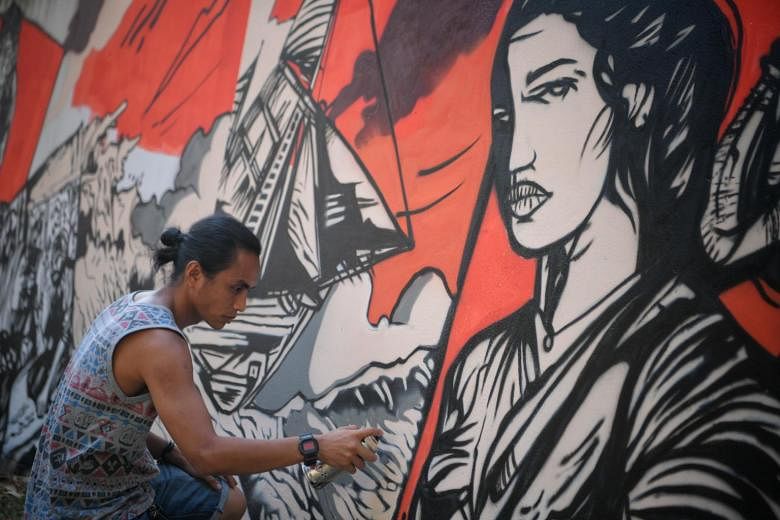I recently went to Kampong Glam, and noticed the mural on the exterior wall of my childhood home, Gedung Kuning (Yellow Mansion), at No. 73 Sultan Gate.
The mostly red and black (and in my view, rather loud) mural depicts the story of Wak Cantuk, a man whose experience with unrequited love led to his running amok around Kampong Glam in the late 1800s.
While the mural tells the story of this "hunchback of Bussorah Street" as he is commonly known in the Malay community, in my view, it is disturbing and raises certain issues:
How can a non-Malay member of the public in Singapore understand the mural and its message, given that the mural depicts the storyline only in Malay?
Why depict the dark story of Wak Cantuk, considering that he went on a killing spree after Tasmiah (the daughter of a rice stall owner) rejected his marriage proposal?
Why can't the mural portray, instead, diverse and inspiring positive stories of the people of Kampong Glam, many of whom were entrepreneurs and have contributed much to their community?
What is the real purpose of the mural; what message is it trying to send, given the wall's setting in a historic quarter of Singapore?
One must be mindful of the placement of such murals and their appropriateness.
Gedung Kuning was constructed to be the residence for the bendahara or prime minister of the Malay Royal Court in the 1850s.
Thus, we must be sensitive to and mindful of the history of the place before we douse it with stark street art that highlights sejarah hitam (black history) of the historic district of Kampong Glam.
Hidayah Amin

